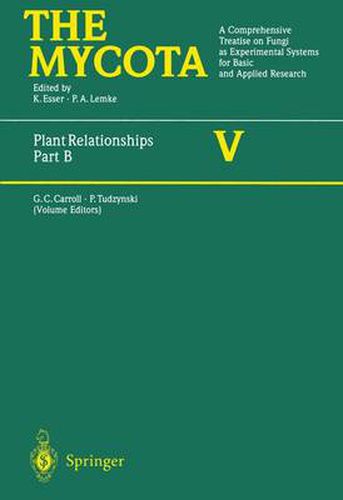Readings Newsletter
Become a Readings Member to make your shopping experience even easier.
Sign in or sign up for free!
You’re not far away from qualifying for FREE standard shipping within Australia
You’ve qualified for FREE standard shipping within Australia
The cart is loading…






This title is printed to order. This book may have been self-published. If so, we cannot guarantee the quality of the content. In the main most books will have gone through the editing process however some may not. We therefore suggest that you be aware of this before ordering this book. If in doubt check either the author or publisher’s details as we are unable to accept any returns unless they are faulty. Please contact us if you have any questions.
Part A and Part B of the fifth of twelve volumes of The Mycota deal with the mechanisms of interactions between fungi and plants and consider pathogenic as well as mutualistic associations.
Nobody involved in the manipulation of plant populations can afford to ignore the fungi, so pervasive and important are fungus/plant interactions for the well-being of plant communities, both managed and natural. Consequently, these volumes will be of interest to a broad range of professionals involved in agriculture, forestry, horticulture, and conservation as well as plant pathology, mycology, ecology, and evolution.
$9.00 standard shipping within Australia
FREE standard shipping within Australia for orders over $100.00
Express & International shipping calculated at checkout
This title is printed to order. This book may have been self-published. If so, we cannot guarantee the quality of the content. In the main most books will have gone through the editing process however some may not. We therefore suggest that you be aware of this before ordering this book. If in doubt check either the author or publisher’s details as we are unable to accept any returns unless they are faulty. Please contact us if you have any questions.
Part A and Part B of the fifth of twelve volumes of The Mycota deal with the mechanisms of interactions between fungi and plants and consider pathogenic as well as mutualistic associations.
Nobody involved in the manipulation of plant populations can afford to ignore the fungi, so pervasive and important are fungus/plant interactions for the well-being of plant communities, both managed and natural. Consequently, these volumes will be of interest to a broad range of professionals involved in agriculture, forestry, horticulture, and conservation as well as plant pathology, mycology, ecology, and evolution.